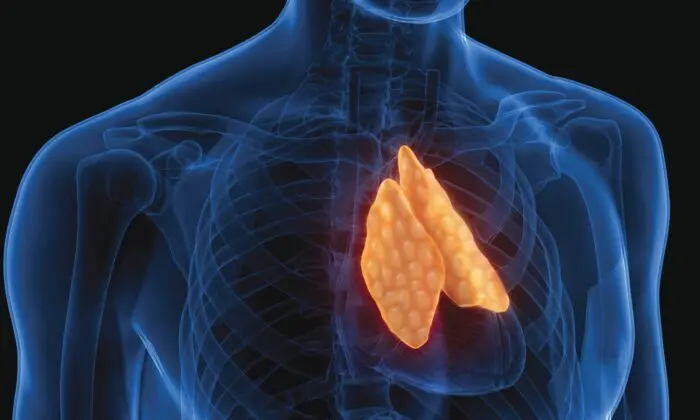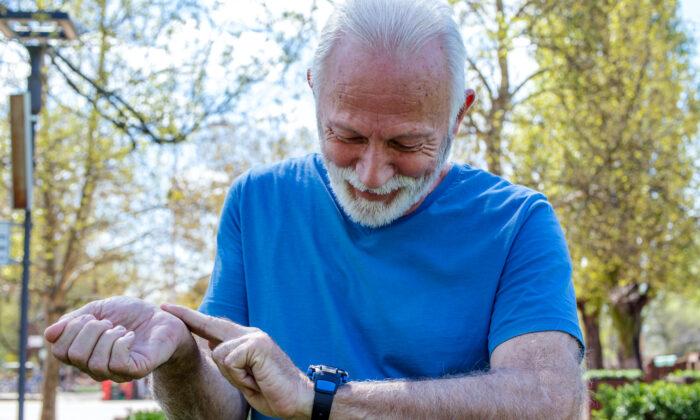Though the advantages of exercise are well known, for middle-aged and elderly people, exercise is a particularly essential everyday activity. Physical immunity can decrease with age, leaving one more vulnerable to everything from simple colds to chronic diseases. Exercise helps strengthen immunity and prevent cardiovascular disease, diabetes, and other ailments.
The study found that the best time of day to exercise was related to gender.
For women, exercising in the morning compared to evening exercise resulted in greater reductions in total and abdominal fat, lower blood pressure, and markedly increased lower-body muscle power. Women who exercised in the evening had “significantly greater gains in upper body muscle strength,” power, and endurance—along with improved mood.
Men who exercised in the evening “experienced a significantly greater reduction in systolic blood pressure,” along with fatigue and higher fat oxidation compared to morning exercisers.
For men, compared with morning exercise, evening exercise is better for lowering blood pressure (9 percent and more in systolic blood pressure), reducing fatigue (55 percent and more), and weight loss (5 percent and more in fat oxidation). Therefore, exercise time for men should be scheduled in the evening for better weight loss and reduction of risk for cardiovascular disease.
How to Prepare for Morning and Evening Exercise
In general, morning exercise is often praised as superior because it provides energy in the morning and sets the stage for better productivity throughout the day. When you want to exercise in the morning but your muscles and joints aren’t very flexible, the first thing you need to do is warm up your body so that you can avoid muscle strains or sprains.Choose Exercise Based on Intensity
When exercising, it’s important to consider safety, the correct time, and your favorite sports so that you can have fun while working out. This will help ensure you maintain a regular exercise schedule. It should also be noted that people of different ages and physiques can withstand different intensities of exercise. Therefore, the right exercise should be chosen according to physical condition.There are three broad exercise intensities: low, moderate, and high. Heart rate usually acts as an indicator to evaluate exercise intensity. The higher the intensity of exercise, the faster the heart rate.
There’s a significant correlation between heart rate and exercise intensity, oxygen uptake, and energy metabolism. Usually, an exercise with a heart rate below 120 beats per minute belongs to low intensity; between 120 and 150 beats per minute belongs to moderate, and between 150 and 180 beats per minute belongs to high intensity. When the heart rate is too fast during exercise and exceeds the maximum tolerance, fatigue and sports injuries are more likely to occur.
Choose Exercise for Your Age, Physical Condition
Between the ages of 26 and 45, the human body can easily become obese. That can be for several reasons, including a reduction in physical activity because this stage is a critical period for career development and life is usually stressful during this time, which can contribute to poor habits, including unhealthy eating.For women in this age group, it would be appropriate to take up medium- and low-intensity aerobic training in addition to strength exercises, such as yoga, jogging, and swimming.
From 46 to 65 years old, the body’s energy gradually declines, and physical strength and muscle mass begin to decline, too. Therefore, physical exercise should be performed to fight against osteoporosis. Recommended exercises for this stage in life include softball and tai chi, though jogging and strength training remain great ways to maintain fitness.
Choose the Exercise You Enjoy
1. Mortality-reducing exercise—racket swingingSwinging exercises can exercise the body’s coordination and various muscle groups, improve cardiorespiratory function, and improve focus and brain health, which can slow down the aging of the brain. It’s recommended these sports are done three to five times each week, with each session lasting between 45 and 60 minutes.
Aerobic exercise requires maintaining an adequate oxygen supply during the period of exercise. It’s commonly associated with low- to moderate-intensity exercise, including brisk walking, jogging, swimming, cycling, aerobics, and jumping rope.
The overall prevalence of hypertension is on the rise, and a lack of physical activity is one of the main reasons.
The report states that a combination of aerobic exercise and strength training can be effective for the purpose of lowering blood pressure. The main strength-training exercises include weighted squats, bench presses, jerks, plank supports, and static curls. All of these exercises can work on lowering blood pressure.




